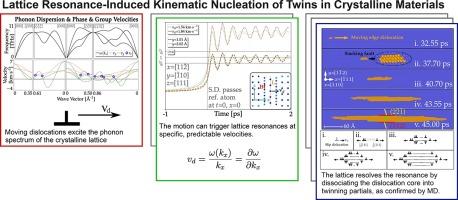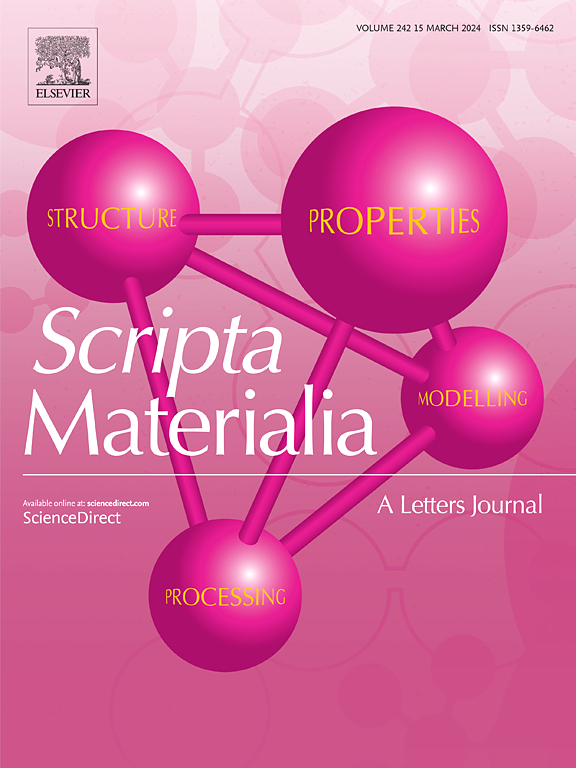晶体材料中晶格共振诱导孪晶的运动成核
IF 5.6
2区 材料科学
Q2 MATERIALS SCIENCE, MULTIDISCIPLINARY
引用次数: 0
摘要
我们提出了一种在晶体材料中孪生成核的新机制——运动孪生成核——在特定的滑动速度下,由于晶格共振,位错自发地解离成孪生部分。通过使用调和晶格形式将位错运动建模为完美晶格中的移动Kanzaki力分布,我们确定了通过Van Hove奇点发生晶格捕获的共振速度,从而导致原子位移放大和位错核心的不稳定。体心立方(bcc)和六方密排(hcp)金属的分子动力学模拟证实,在这些共振速度附近移动的位错会自发地解离成孪晶部分,除了它们自己的运动之外,没有其他作用,从而启动孪晶形成,并绕过长期以来被认为过高的能量障碍,使位错自发解离成孪晶部分成为可能。我们的发现为在bcc Fe中观察到的孪晶结构提供了物理基础,并强调了晶格动力学在塑性变形中的关键作用。这一普遍机制扩展了我们对孪核的理解,并为通过控制位错速度来剪裁机械性能开辟了新的途径。本文章由计算机程序翻译,如有差异,请以英文原文为准。

Lattice resonance-induced kinematic nucleation of twins in crystalline materials
We present a novel mechanism for twin nucleation in crystalline materials—kinematic twin nucleation—where dislocations spontaneously dissociate into twinning partials due to lattice resonance at specific glide velocities. By modelling dislocation motion using harmonic lattice formalism as moving Kanzaki force distributions in a perfect lattice, we identify resonance velocities where lattice trapping occurs via Van Hove singularities, leading to amplified atomic displacements and the destabilisation of the dislocation core. Molecular dynamics simulations in body-centred cubic (bcc) and hexagonal close-packed (hcp) metals confirm that dislocations moving near these resonance velocities spontaneously dissociate into twinning partials, initiating twin formation without other agency than their own motion, and bypassing energy barriers long since thought to be too high for spontaneous dissociations of dislocations into twinning partials to be possible. Our findings provide a physical rationale for twin structures observed in bcc Fe, and emphasise the crucial role of lattice dynamics in plastic deformation. This universal mechanism expands our understanding of twin nucleation, and opens new avenues for tailoring mechanical properties through controlled manipulation of dislocation velocities.
求助全文
通过发布文献求助,成功后即可免费获取论文全文。
去求助
来源期刊

Scripta Materialia
工程技术-材料科学:综合
CiteScore
11.40
自引率
5.00%
发文量
581
审稿时长
34 days
期刊介绍:
Scripta Materialia is a LETTERS journal of Acta Materialia, providing a forum for the rapid publication of short communications on the relationship between the structure and the properties of inorganic materials. The emphasis is on originality rather than incremental research. Short reports on the development of materials with novel or substantially improved properties are also welcomed. Emphasis is on either the functional or mechanical behavior of metals, ceramics and semiconductors at all length scales.
 求助内容:
求助内容: 应助结果提醒方式:
应助结果提醒方式:


